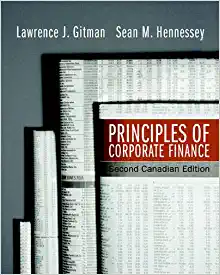Question
5-2 Artists Performance Royalties Performance rights organizations track and pay royalties to song writers, publishers, and musicians for use of their works. Royalties are paid
5-2
Artists Performance Royalties
Performance rights organizations track and pay royalties to song writers, publishers, and musicians for use of their works. Royalties are paid to an artist based on a complicated credit system using a formula with weights assigned for a variety of factors, including the following:
- Use: weight based on the type of song or performance (theme, underscore, or promotional).
- Licensee: weight based on the stations licensing fee, which is determined by the size of the licensees markets and number of stations carrying its broadcast signal.
- Time-of-Day: weight assigned according to whether the performances are broadcast during peak viewing or listening times.
- Follow-the-Dollar: factor based on the medium from which the money came (radio play, live performance, TV performance, and so on).
- General Licensing Allocation: based on fees collected from bars, hotels, and other nonbroadcast licensees.
These amounts are multiplied together, and then a radio feature premium is added, if applicable, to arrive at a total number of credits for the particular artist, or his or her credit total for a particular reporting period. Royalties are usually split among the writer, the publisher, and possibly a performer if the writer does not perform his or her own work. The proportion that each party receives is called the share value. All of the money collected for the reporting period divided by the total number of credits for all performers is called the credit value. An artist who wants to figure out what money he or she will receive for a period has to multiply the three factors; credit total, share value, and credit value.
- 1. Ziam wants to know how much his royalty will be for a song he has written. How will it be calculated? Write the steps or the formulas that will be used to calculate his royalty payment.
- 2. Ziam has written a popular song entitled Going There, which has been recorded by a well-known performer. He recently received a royalty check for $7,000. If Ziam gets a 0.5 share of the royalties and the credit value is $3.50, what was the credit total that his song earned? Write out the problem in the form of an equation and solve it.
- 3. Ziam quickly published another song, Take Me There, that is played even more often than Going There. If his first song earns 4,000 credits and his second song earns 6,000 credits, what will the royalty payment be from the two songs if the credit value remains at $3.50?
- 4. Ziam is considering an offer to perform his own songs on a CD to be titled Waiting There. In the past he has written, but not performed, his music. If Ziams royalty is 0.12 of the suggested retail price of $15.00, but 0.25 of the retail price is deducted for packaging before Ziams royalty is calculated, how much will he receive for sale of the CD? Write your answer in the form of an equation and solve it.
6-2 Customer Relationship Management
Minh Phan is going over the numbers one more time. He is about to make the most important sales presentation of his young career, and wants everything to be right. His prospective client, Media Systems, Inc., is one of the countrys leading media and communications organizations. Media Systems primary challenge is how to effectively manage its diverse customer base. The company has 70,000 publication subscribers, 58,000 advertisers, 30,000 telephone services customers, and 18,000 ISP (Internet service provider) customers. The company had little information about who its customers truly were, which products they were using, and how satisfied they were with the service they received. Thats where Minh and his company, Customer Solution Technologies, LLC, came in. Through the use of customer relationship management software, Minh believed Media Systems would be able to substantially improve its ability to cross-sell and up-sell multiple media and communications services to customers, while substantially reducing customer complaints.
- 1. What percentage of the total does each of the four customer groups represent? Round to the nearest hundredth of a percent.
216217
- 2. Minhs data shows that on average, only 4.6% of customers were purchasing complementary services available within Media Systems. By using his companys services, Minh was projecting that these percentages would triple across all user groups within one year. How many customers would that equate to in total for each group? What would be the difference compared to current levels?
- 3. Customer complaint data showed that within the last year, complaints by category were as follows: publication subscribers, 1,174; advertisers, 423; telephone service customers, 4,411; and ISP customers 823. What percentage of customers (round to two decimal places) complained within the last year in each category? If the CRM software were able to reduce complaints by 50% each year over the next two years, how many complaints would there be by category at the end of that time period? What would the number of complaints at the end of two years represent on a percentage basis?
Step by Step Solution
There are 3 Steps involved in it
Step: 1

Get Instant Access to Expert-Tailored Solutions
See step-by-step solutions with expert insights and AI powered tools for academic success
Step: 2

Step: 3

Ace Your Homework with AI
Get the answers you need in no time with our AI-driven, step-by-step assistance
Get Started


